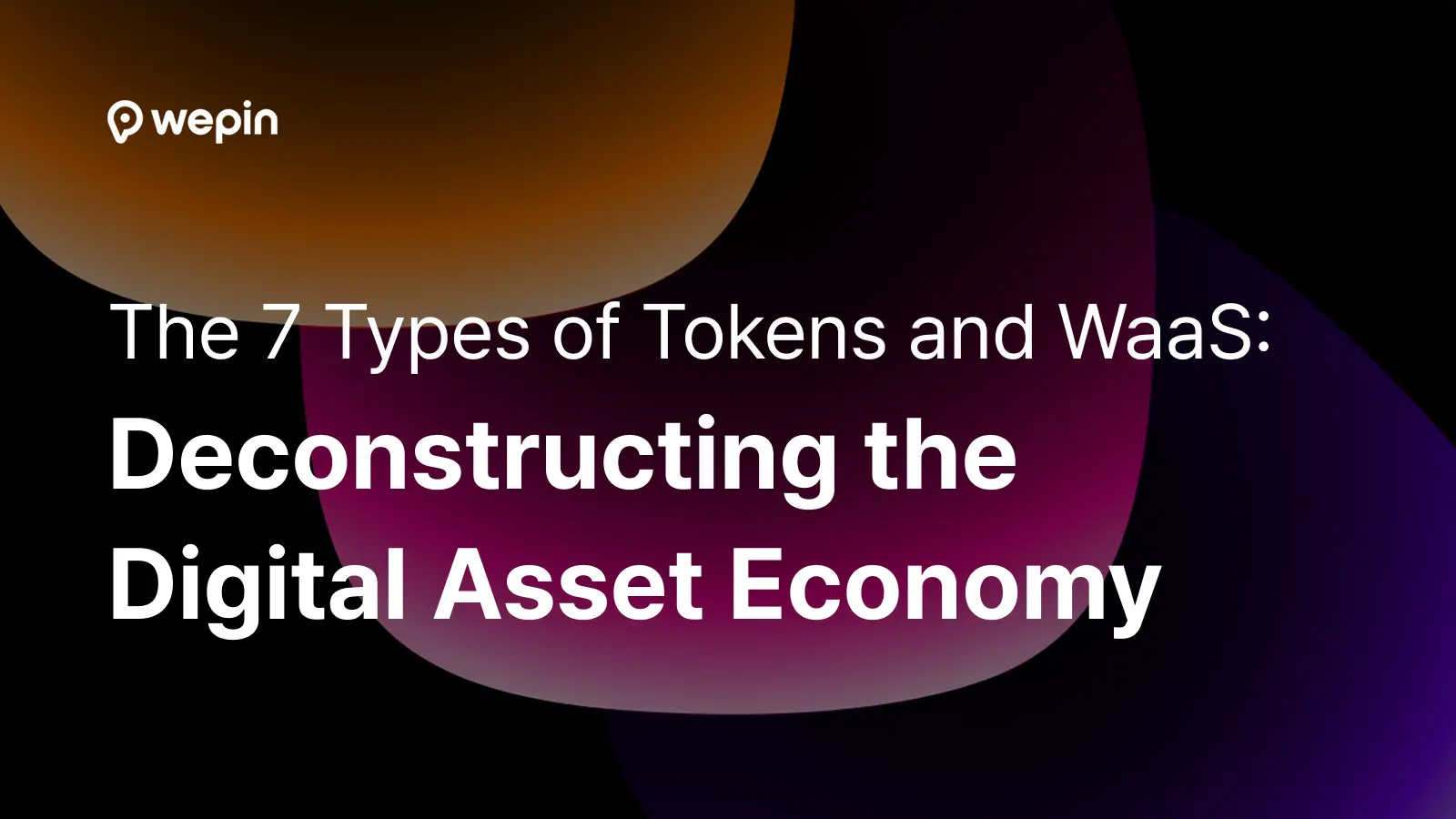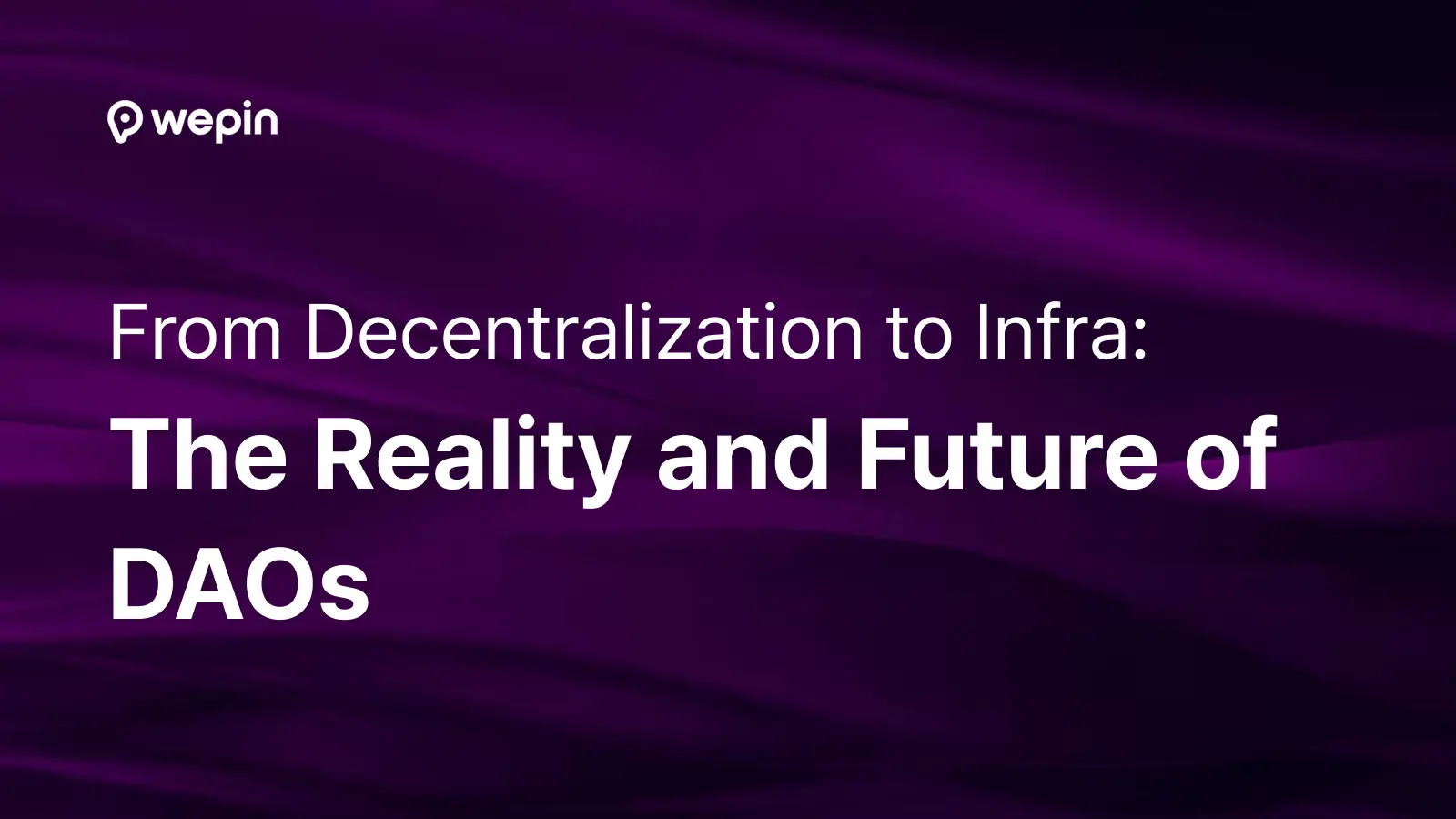Author: Jiyun Kyung, Business Development (https://www.linkedin.com/in/jiyunkyung/)
[TL;DR]
- Gas fees are charges necessary for processing transactions on blockchain networks, calculated as the product of gas limit and gas price, and play an important role in maintaining network stability and security.
- However, due to gas fees, Web2 users may experience inconvenience in the process of acquiring and using tokens, which acts as an entry barrier to using blockchain services.
- Account Abstraction is a technology that creates a flexible and scalable account model by expressing all accounts as smart contracts, with advantages such as supporting various authentication methods, sponsoring gas costs, and account recovery mechanisms.
- Through the combination of WaaS and Account Abstraction, Web2 companies can provide user-friendly blockchain wallet services, which is expected to contribute to the popularization of blockchain technology.
Blockchain technology is gaining attention due to its advantages such as decentralization, transparency, and security. Ethereum, in particular, has enabled the development of various decentralized applications (DApps) through its smart contract functionality. However, 'gas fees' are often pointed out as one of the elements hindering the popularization of blockchain. So what exactly are gas fees and why are they problematic?
1. What are Gas Fees? Basic Concept of Gas Fees
Gas fees are charges that occur when using a blockchain network. Specifically, gas fees are the costs necessary to process transactions on the blockchain network. Simply put, they can be seen as fees paid for using the network.
- In Ethereum, gas fees occur for all operations such as executing smart contracts or transferring tokens.
- Gas fees fluctuate according to network congestion. The more users, the higher the gas fees.
- If you want to process transactions quickly, you need to pay higher gas fees.
1.1 Components of Gas Fees
Gas fees typically consist of two elements:
- 가스 리밋(Gas Limit) : 트랜잭션을 처Gas Limit: This refers to the maximum amount of gas that can be used to process a transaction.
- Gas Price: This means the amount to be paid per unit of gas, usually using a unit called Gwei.
To calculate simply, the gas fee that ultimately needs to be paid is the product of the gas limit and gas price, the two components of gas fees.
1.2 Importance of Gas Fees
Gas fees play an important role in maintaining the stability and security of the blockchain network.
- Gas fees prevent unnecessary or malicious transactions.
- They can prevent the execution of code that could burden the network, such as infinite loops.
- As miners receive rewards for block creation through gas fees, gas fees contribute to network maintenance.
Gas fees are essential fees used because they contribute to the incentives and network security that form the foundation of blockchain. However, gas fees also have the disadvantage of potentially lowering accessibility for users unfamiliar with Web3 or blockchain.
2. Gas that Inconveniences Web2 Users
For Web2 companies to develop DApps and provide services utilizing blockchain technology, a token economic system is necessary. However, this is not only an unfamiliar concept to existing Web2 users, but it can also cause significant entry barriers and inconvenience in the process of acquiring and using tokens.
2.1 Token Acquisition Process and Inconvenience for Web2 Users
To use a DApp created by a Web2 company, you need to have tokens for that DApp. So how can Web2 users acquire tokens? There are mainly two ways:
- Purchasing tokens from centralized exchanges: Users can sign up for a cryptocurrency exchange and purchase desired tokens using fiat currency.
- Using token swaps or bridges: If users already hold other types of cryptocurrencies, they can exchange them for desired tokens through swap or bridge services.
However, Web2 users may experience several inconveniences in this process.First, the process of signing up and verifying on a centralized exchange is complex and time-consuming. If it's a foreign exchange, users need to provide particularly sensitive personal information and set up security measures. If the token they want to use is not listed on the exchange, they need to use token swaps or bridges, which also have problems.
*What are Swaps and Bridges? Swaps are used to exchange tokens within the same blockchain network, while bridges are used to transfer tokens between different blockchain networks.
In the process of swapping or bridging, gas fees need to be paid, which is a very unfamiliar concept to Web2 users. Users unfamiliar with blockchain might feel bewildered by the fact that fees are incurred just for exchanging tokens.
Moreover, the interfaces of swap or bridge services may not be intuitive for Web2 users. They need to understand concepts such as exchange rates, slippage, and gas fees, and set them appropriately before execution, which acts as a significant entry barrier in terms of user experience.
2.2 Improving User Experience through Account Abstraction
The blockchain industry is making various efforts to solve such gas fee problems. Technical efforts include Layer 2 solutions, sidechains, meta transactions, and the most noteworthy solution is account abstraction.
Account abstraction extends the existing Ethereum account system to allow the creation of smart contract-based accounts. So how can smart contract-based accounts solve the gas fee problem?
3. The Meeting of Account Abstraction and WaaS: Innovation for Blockchain Popularization
Account Abstraction is a technology that expands and increases the flexibility of Ethereum's account model. Previously, Ethereum had two types of accounts: Externally Owned Accounts (EOA) and Contract Accounts.
EOAs are accounts controlled by private keys, where users directly sign transactions. On the other hand, Contract Accounts are controlled by smart contract code.
Account Abstraction aims to eliminate this difference between accounts and represent all accounts as smart contracts. In other words, user accounts also become a type of smart contract. This allows for a much more flexible and scalable account model.
3.1 Advantages and Operating Principles of Account Abstraction
So what are the advantages of Account Abstraction?
- Support for Various Authentication Methods: While existing EOAs could only be controlled by private keys, Account Abstraction allows for the implementation of various authentication methods. Complex multi-signatures, social logins, 2FA, etc., can be directly implemented in smart contracts.
- Gas Fee Sponsorship: Account Abstraction also makes it possible to sponsor gas fees on behalf of users. By adding a Paymaster function to smart contracts, transaction fees can be paid on behalf of users.
- Recovery Mechanisms: With existing EOAs, accounts couldn't be recovered if private keys were lost. However, Account Abstraction allows for the implementation of various recovery mechanisms, utilizing social recovery, guardian settings, etc.
- Batch Transactions: Multiple transactions can be bundled and processed as a single transaction. This can reduce gas costs and increase efficiency.
The core of Account Abstraction is User Operations. User Operations are similar to existing transactions but include additional information for Account Abstraction. For example, it includes the address of the Paymaster who will sponsor the transaction fee and the logic for verifying user signatures.
These User Operations are collected by a Bundler and delivered to the EntryPoint Contract. The EntryPoint Contract validates the User Operations and executes the actual transactions. In this process, the Paymaster sponsors the transaction fees, and the logic for verifying user signatures is executed.
3.2 Simplifying Token Purchase and Usage Process through AA
Through Account Abstraction, Web2 companies can significantly simplify the process of users purchasing and using tokens. For example, when a user signs up for a dApp through social login, a smart contract account can be automatically created and necessary tokens can be pre-allocated to that account.
This way, users can use the service immediately without having to sign up for a separate exchange or go through a token purchase process. As account creation and token allocation are all automatically processed in the background, user experience can be greatly improved.
Account Abstraction can also solve the gas fee problem. By implementing a Paymaster function in smart contract accounts, gas fees can be sponsored on behalf of users. In other words, users don't have to worry about gas fees when transferring or swapping tokens. If Web2 companies bear the gas fees, users can use tokens as naturally as using points in Web2 services.
3.3 The Meeting of WaaS and Account Abstraction
Account Abstraction can also play a crucial role in WaaS (Wallet-as-a-Service). WaaS is a service-ization of blockchain wallet functions, aiming to provide a user-friendly wallet experience. Usually, WaaS provides wallet functions in the form of APIs or SDKs, allowing developers to easily integrate blockchain wallets into their services.
WaaS providers can help existing developers leverage the benefits of Account Abstraction by providing wallet service APIs or SDKs. In short, developers can provide a user-friendly wallet experience to customers without having to deal with complex blockchain technology, just by integrating the SDK into their service.
3.3.1 Application Cases of WaaS and Account Abstraction
- Games: Blockchain game developers can easily implement in-game wallets through WaaS SDK integration. Users can access games through social login and trade NFTs without separate gas fees. As WaaS abstracts all complexity, users can enjoy games without being conscious of blockchain.
- Financial Services: If a virtual asset investment platform adopts WaaS, it can greatly improve user experience. Users can easily sign up with email and password, and manage various digital assets in a single integrated wallet. Also, through WaaS's gas fee sponsorship function, users can focus on investment activities without the burden of gas fees.
- Commerce: If e-commerce platforms utilize WaaS, they can easily adopt blockchain technologies such as NFTs. Users can purchase and trade NFTs using existing login methods. As WaaS's Account Abstraction hides all technical complexity, users can enjoy the benefits of NFTs without prior knowledge of blockchain.
4. Conclusion
Account Abstraction and WaaS are innovations that can accelerate the popularization of blockchain technology. By implementing flexible and powerful account models through Account Abstraction and providing user-friendly wallet experiences through WaaS, the gap between Web2 and Web3 can be reduced.
In particular, Account Abstraction plays a significant role in solving major issues of blockchain wallets such as user authentication, gas fee sponsorship, and account recovery, while WaaS provides familiar and intuitive wallet services based on this Account Abstraction.
The Wepin wallet being developed by IoTrust is an innovative WaaS platform striving to apply Account Abstraction to WaaS. In the future, through Wepin wallet's SDK, developers will be able to easily integrate Account Abstraction into their services, and users will be able to enjoy the benefits of blockchain without feeling its complexity.
For blockchain technology to permeate widely into our lives, innovation in user experience is essential. Solutions like Account Abstraction and the Wepin wallet will be the answer for this, and if developers from various industries can easily utilize the advantages of blockchain through Wepin, we will be able to encounter closer and more convenient blockchain services.
At the center of blockchain technology popularization are users. We hope that Account Abstraction and the Wepin wallet can contribute to creating a user-centric blockchain world.











